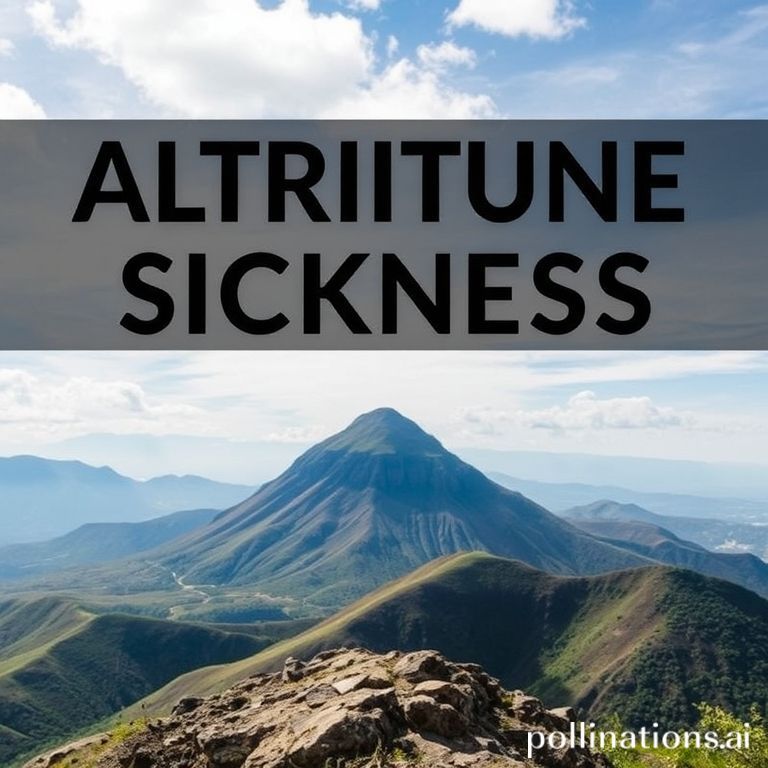Mexico, a land of vibrant culture, stunning landscapes, and ancient ruins, beckons travelers from around the globe. However, for many, the excitement of exploring this beautiful country can be overshadowed by an unexpected challenge: altitude sickness. With several popular destinations situated at significant elevations, understanding how to prevent and manage altitude sickness is crucial for a comfortable and enjoyable trip. Don’t let the heights deter you; with the right preparation, you can conquer the altitudes and fully immerse yourself in the Mexican experience.
This guide will provide you with essential information and practical tips to help you navigate the high altitudes of Mexico and minimize the risks of altitude sickness, ensuring your adventure is filled with breathtaking views and unforgettable memories, not unpleasant symptoms.
Understanding Altitude Sickness
Altitude sickness, also known as acute mountain sickness (AMS), occurs when your body struggles to adjust to the lower oxygen levels at high elevations. The higher you go, the less oxygen is available in the air. This can lead to a variety of symptoms, ranging from mild to severe. Understanding the causes and symptoms is the first step in preventing and managing this condition.
Common Symptoms of Altitude Sickness
- Headache: Often the first and most common symptom.
- Nausea and Vomiting: Can range from mild queasiness to severe vomiting.
- Fatigue: Feeling unusually tired and weak.
- Dizziness: Lightheadedness or a spinning sensation.
- Shortness of Breath: Difficulty breathing, especially during exertion.
- Loss of Appetite: A decreased desire to eat.
- Difficulty Sleeping: Insomnia or restless sleep.
Why Mexico is a High-Altitude Destination
Several popular destinations in Mexico are located at high altitudes, making visitors susceptible to altitude sickness. Mexico City, for example, sits at an elevation of 7,350 feet (2,240 meters) above sea level. Other high-altitude cities include San Cristobal de las Casas, San Miguel de Allende, and even parts of Guadalajara. Knowing the altitude of your destination is crucial for preparing accordingly.
Preventing Altitude Sickness in Mexico
Prevention is always better than cure. Taking proactive steps before and during your trip can significantly reduce your chances of experiencing altitude sickness. Here are some effective strategies:
Acclimatize Gradually
The best way to prevent altitude sickness is to ascend gradually. If possible, spend a few days at a moderate altitude before traveling to higher elevations. This allows your body to adjust to the lower oxygen levels. If you’re flying directly into a high-altitude city like Mexico City, take it easy on your first day. Avoid strenuous activities and allow your body time to adapt.
Stay Hydrated
Dehydration can worsen the symptoms of altitude sickness. Drink plenty of water throughout your trip. Avoid excessive consumption of alcohol and caffeine, as they can dehydrate you.
Avoid Alcohol and Smoking
Alcohol and smoking can both exacerbate the effects of altitude sickness. Alcohol can dehydrate you and interfere with your body’s ability to acclimatize, while smoking reduces the amount of oxygen in your blood.
Eat Light Meals
Avoid heavy, greasy meals, especially upon arrival at a high-altitude destination. Opt for light, carbohydrate-rich foods, which are easier to digest and provide energy.
Consider Medication
Consult your doctor about medications like acetazolamide (Diamox), which can help prevent altitude sickness. If you have a history of altitude sickness or are particularly sensitive, this might be a good option. Start taking the medication a day or two before your ascent and continue for a few days after reaching your highest elevation.
Managing Altitude Sickness Symptoms
Even with preventative measures, you might still experience some symptoms of altitude sickness. Here’s how to manage them:
Rest and Avoid Exertion
If you start feeling symptoms, rest and avoid strenuous activities. Overexertion can worsen the condition. Give your body time to adjust.
Descend if Necessary
If your symptoms are severe or not improving, descend to a lower altitude. Even a small descent of a few hundred feet can make a significant difference. This is often the most effective treatment for altitude sickness.
Over-the-Counter Medications
Over-the-counter pain relievers like ibuprofen or acetaminophen can help alleviate headaches. Anti-nausea medications can help with nausea and vomiting.
Oxygen Therapy
In severe cases, supplemental oxygen may be necessary. Many hotels and clinics in high-altitude areas offer oxygen therapy. If you’re experiencing severe symptoms, seek medical attention immediately.
Conclusion
Altitude sickness can be a significant concern for travelers in Mexico, but with proper preparation and awareness, it doesn’t have to ruin your trip. By understanding the causes and symptoms, taking preventative measures, and knowing how to manage symptoms if they arise, you can confidently explore the stunning high-altitude destinations that Mexico has to offer. Remember to acclimatize gradually, stay hydrated, avoid alcohol and smoking, and listen to your body. With these tips, you’ll be well-equipped to handle the altitude and enjoy an unforgettable Mexican adventure.
Ready to start planning your high-altitude adventure? Share this article with your travel buddies and let them know how to stay safe and healthy in Mexico!
IMAGE: A traveler stands on a scenic overlook in the mountains of Mexico, breathing deeply and smiling. The sun is setting, casting a warm golden glow over the landscape. In the background, there are rolling hills and vibrant Mexican villages. The image should convey a sense of adventure, peace, and well-being, despite the altitude. Style: Travel photography, natural lighting, vibrant colors.


